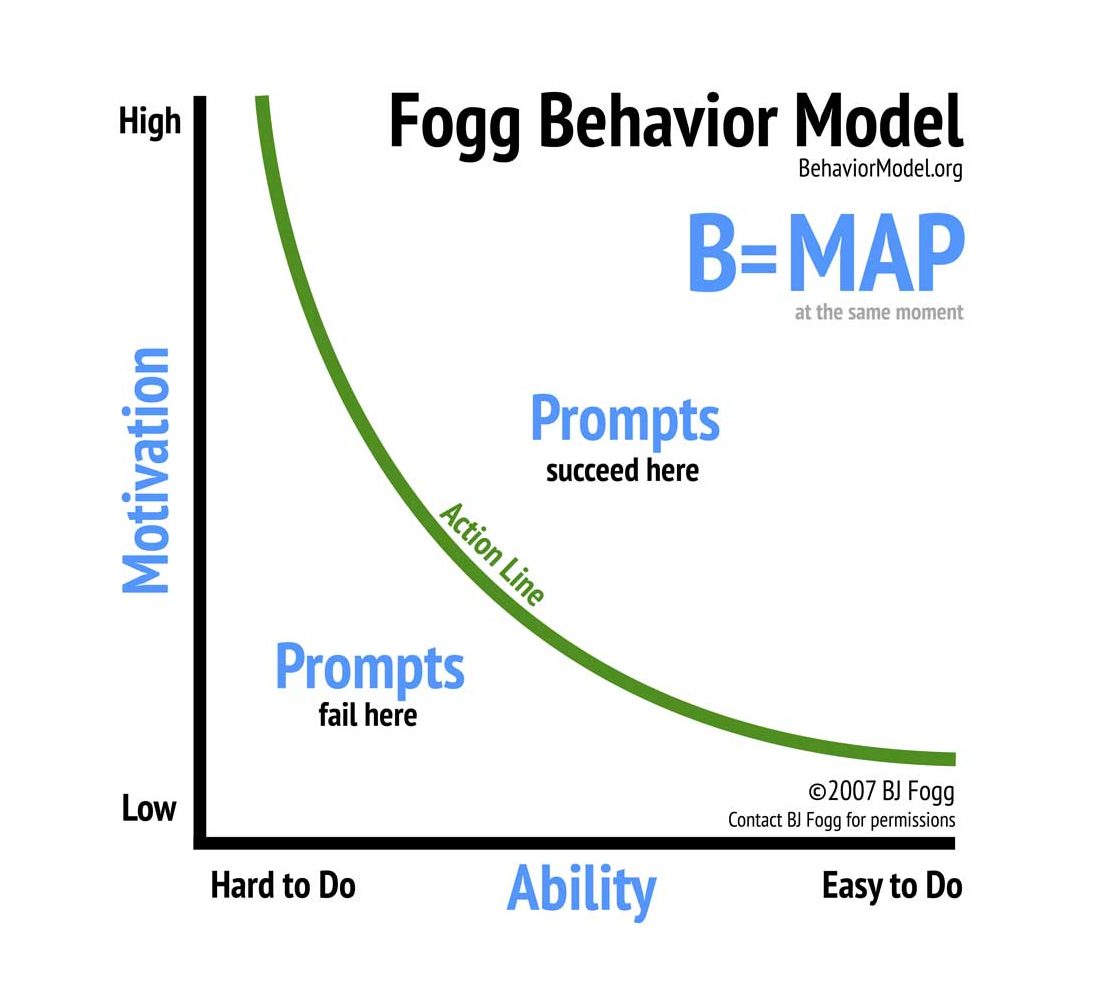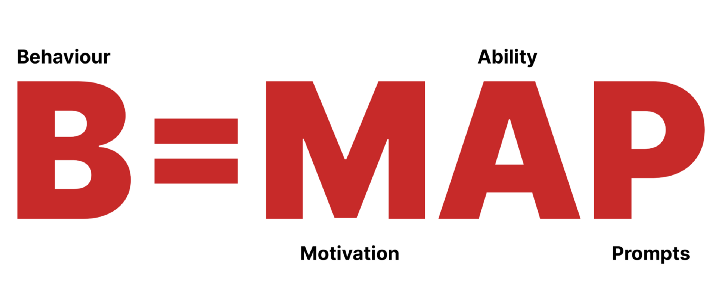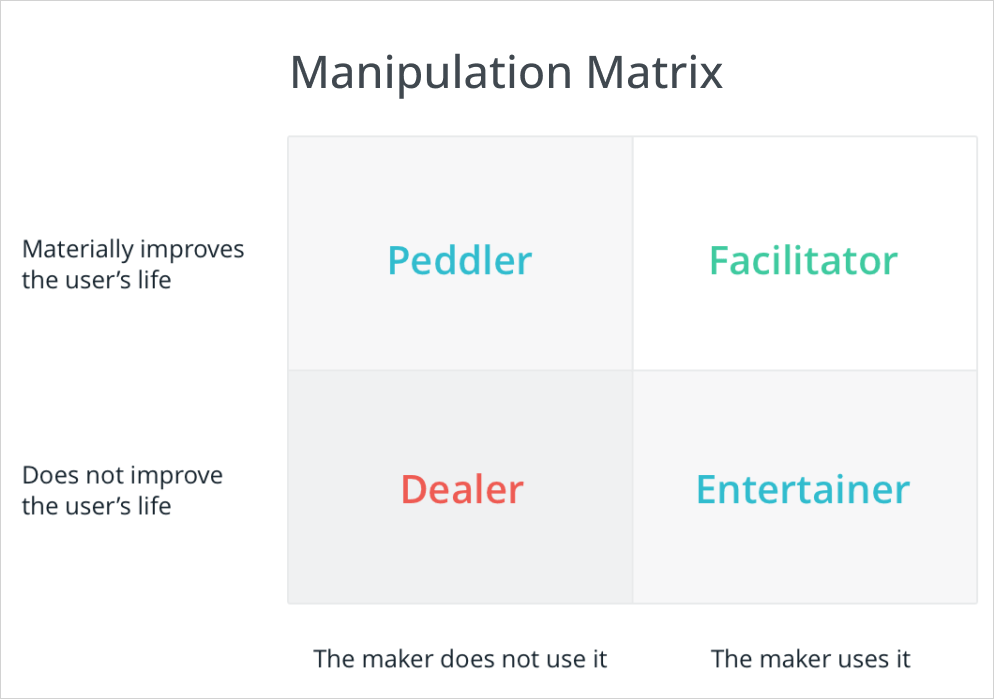We design with intent, for how users behave, building an environment that supports whatever route they take, instead of forcing them to conform to how our product.
Designing for behaviour changeUsing the Fogg behaviour model
Let's try to be good
Further reading
Designing for behaviour change
Why are users doing things we don’t expect them to? Why are they getting frustrated and failing to get things done? This is what we want to find out.
At the core of behavioural design is a systematic understanding of how people make decisions. We might want to influence how our users travel through C2P, by carefully managing the route they take and seeing what obstacles might stop them from completing their goals. We might also want to influence how our kids behave by influencing their behaviour, not by grand intuitive gestures, but by a smarter, more focused approach.
Using the Fogg behaviour model
The Fogg behaviour model is an excellent guide to predicting and understanding user behavior. Behaviour Scientist B.J. Fogg shows that there must be three elements for behaviour to happen; motivation, ability, and prompts.

1. Motivation
For a user to perform a target behavior, increasing their motivation or ability to do so will increase the likeliness of the behavior happening. These are the underlying drives which motivate you, such as sensation, anticipation and belonging. Sensation deals with actions that either bring us pleasure, whilst other actions cause us pain, which we avoid. Anticipation deals with feelings of fear or hope, so users want to find meaning in what they are doing. Finally, belonging is a central motivator in our lives. To make the experience more meaningful and drive users to their goals, we can foster a shared sense of community.
2. Ability
When the behaviour is easy to perform. Making a task easy to do sounds obvious, but how many times do you need to go through many distinct steps to get something done? Do not frustrate a motivated user. By cutting down steps and making it clear what to do, they should be able to go on their journey without too much friction.
3. Prompt
As Fogg says 'prompts tell people to "do it now!" Sometimes a Prompt can be external, like an alarm sounding. Other times, the Prompt can come from our daily routine: Walking through the kitchen may trigger us to open the fridge.'
There is a simple equation to remember. B=MAP (Behaviour equals Motivation, Ability and Prompts).

To make your solution or product compelling and useful. Make it easy to get started with and give plenty of cues, triggers and prompts for the person to get started.
An example
How do we use this? In the early stages of creating a design solution, start with this model when thinking about the best way to do it.
A good example is doing taxes. First, we want a landing page that shows the benefits of getting your taxes done quickly and within minutes. This is a prompt.
This landing page has something that the person wants, such as an automatic way to do their taxes in two minutes flat. Now that sounds great. There are many motivations here; to get this horrible task done at all, not to get a bad tax bill down the line, be safe and free up time for more enjoyable pursuits.
Finally, we must make this a simple thing to do by making a clear sign-up process, possibly with no credit car up front and making the steps to the goal clear to understand.
Let's try to be good

To guide us through this existentialist dilemma, between business and user interests, we can use Nir Eyal’s Manipulation Matrix, a simple guide to test where your behavioural design strategy sits on the good and fiendish axis.
Two essential questions he asks are; does the product materially improve the user’s life and does the product maker use it himself or herself? If you can answer these questions with confidence and aim to be a ‘facilitator’, then you are off to a good start.
Further reading
We have only scratched the surface of designing for behaviour change. Below are more resources if you want to dive in to this fascinating subject more deeply.